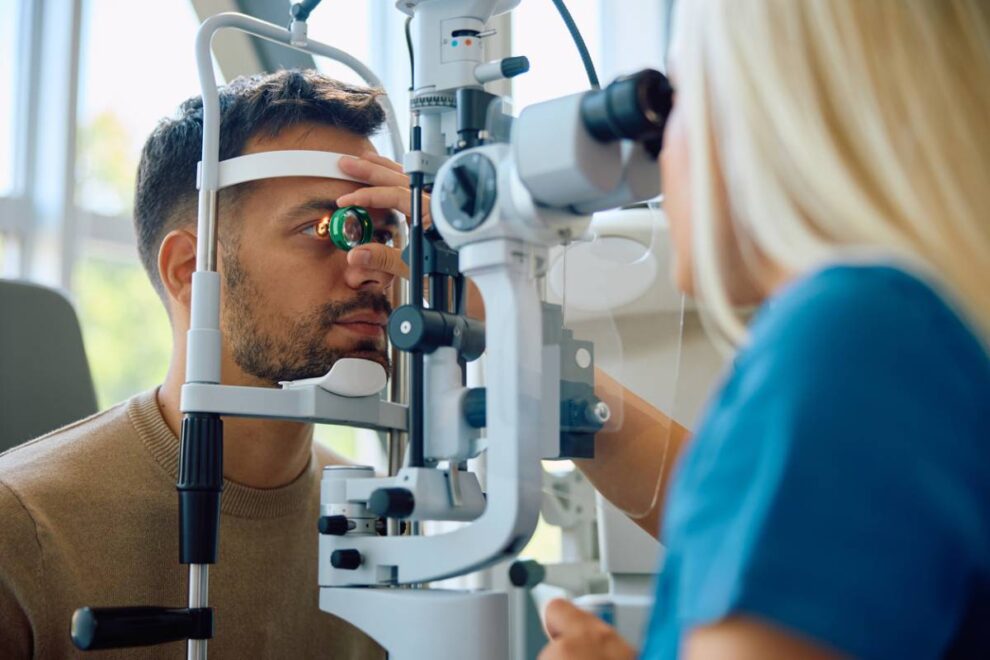Posted by: Caster Eye Center in Smile/Lasik

If you are tired of fogging glasses or dealing with contacts, there is a good chance you have considered vision correction. But once you start doing your research, you quickly realize there isn’t just one option. With multiple types of LASIK on the market, the question becomes which one is right for you? A leading choice of LASIK is SMILE, a less invasive technique hailed for its smooth recovery. To determine what type of LASIK is right for you, you will need to talk with a laser eye specialist. Eligibility depends on a number of factors, and consulting with professionals ensures your journey to vision correction goes as smoothly as possible.
What Is SMILE LASIK?
SMILE is an acronym for small incision lenticule extraction, a laser eye surgery that corrects vision problems like nearsightedness and astigmatism. During SMILE, your surgeon reshapes your cornea using a specially developed laser. It is minimally invasive, requiring a small incision less than four millimeters long. The laser creates lenticules, disc-shaped tissue in your cornea. Removing this tissue is what alters the shape of your cornea.
Who Should Get SMILE LASIK?
Not everyone is a good fit for SMILE LASIK, those who typically have refractive errors and want to ditch their glasses or contacts for good. SMILE may be recommended if you have a higher prescription or problems with dry eyes. Good candidates for SMILE:
- Are at least 22 years old.
- Have had no significant change in prescription in the last year.
- Have prescriptions that fall within a specific range.
- Have healthy corneas.
- Are able to comprehend the benefits, risks, and limitations.
Who Shouldn’t Get SMILE?
SMILE is typically not recommended in cases such as:
- Pregnancy or breastfeeding.
- Frequent changes in prescription.
- Have severe glaucoma.
- Have scars on your cornea.
- Have certain skin disorders.
- Have unmanaged diabetes.
- Have vision-affected cataracts.
- Have had certain eye surgeries, injuries, or infections.
Preparing for SMILE LASIK
Before any lasers get started, a pre-surgery appointment is required. Your surgeon will confirm that you don’t have any diseases or conditions that are not advisable with SMILE and examine the health and shape of your eyes. By measuring your cornea’s curvature and thickness, your surgeon will map out plans to remove your lenticule. Your health care team will provide you with all necessary instructions and information prior to your surgery. It is important that you understand every step of the process. Be sure to report any medications or over-the-counter supplements you take regularly. Due to some of the normal symptoms related to SMILE, you should have a responsible adult drive you home for safety purposes.
How Long Does SMILE take?
SMILE is an exceptionally fast procedure, requiring only minutes for each eye. The part where your surgeon uses a laser is only about 30 seconds. After SMILE surgery, you should spend the rest of the day relaxing and resting. Over the next few days or weeks, your vision should improve. Some experience improvement right away. After one or two days, most patients return to normal activities.
The Next Step Toward Vision Correction
Choosing to undergo vision correction is a big decision, and SMILE LASIK is an excellent minimally invasive option for the right person. Ideal candidates meet certain criteria related to multiple factors. To truly determine if you are a good fit for this life-changing procedure, consult with professionals. Schedule a consultation with a qualified laser eye specialist to ensure success. They will take detailed measurements and in-depth analysis to confirm your eligibility. SMILE has given millions back their sight, and it could do the same for you.
CTA: To learn more about SMILE LASIK, talk to a professional today.
Reference:
Cleveland Clinic. (2023). SMILE Eye Surgery.
